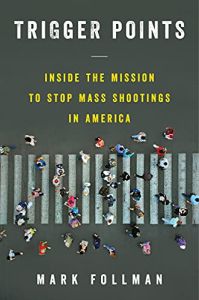Join getAbstract to access the summary!

Join getAbstract to access the summary!
Mark Follman
Trigger Points
Inside the Mission to Stop Mass Shootings in America
Dey Street, 2022
What's inside?
Mass shootings grab headlines, but there’s hope. Authorities have quietly preempted tragedies for decades.
Recommendation
Having reported on gun violence for more than a decade, Mark Follman chronicles behind-the-scenes research and efforts by law enforcement officials and mental health experts who are trying to make sense of senseless, violent acts and prevent them. They are striving, with some success, to prevent mass shootings and assassinations. Often, commentators and the media position gun control as a Second Amendment issue or sensationalize tragic events, giving shooters the spotlight they seek. But intervention in a potential shooter’s life at a critical, early moment can save lives. As Follman reports, you can find some hope in the steps experts are taking to ameliorate a seemingly hopeless situation.
Summary
About the Author
Longtime journalist Mark Follman is the national affairs editor at Mother Jones.

















Comment on this summary